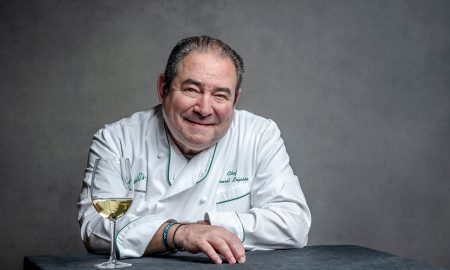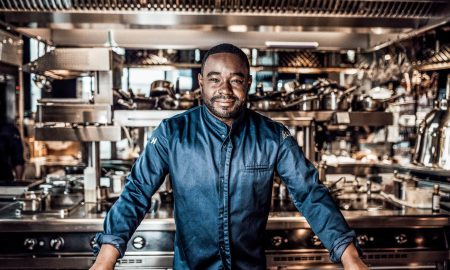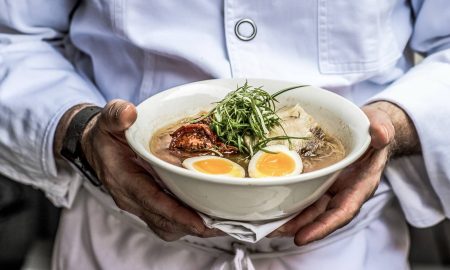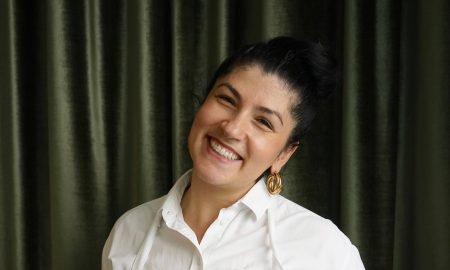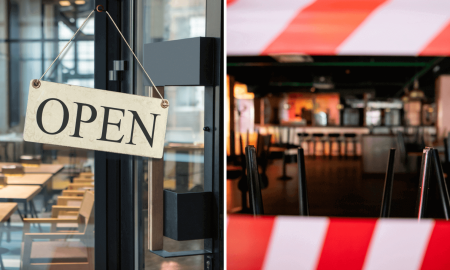Fame, Fame, Fame
In the mid-1970s, Wolfgang Puck left Carinthia, Austria and set out for the Land of Opportunity without a cent to his name. Today, he oversees a food empire of the absolute highest order. Puck began writing international culinary history in 1982, when he opened Spago on legendary Sunset Boulevard. The gourmet pizza he served there wasn’t the only reason he became America’s undisputed top chef. Even today, all of Hollywood still heads to Spago for a post-Oscar celebration, where Puck prepares dinner for the stars annually despite having ascended into their ranks: he’s got a star on the Hollywood Walk of Fame, he’s been a character on the Simpsons, and he’s won seven James Beard Foundation awards… the list goes on and on!
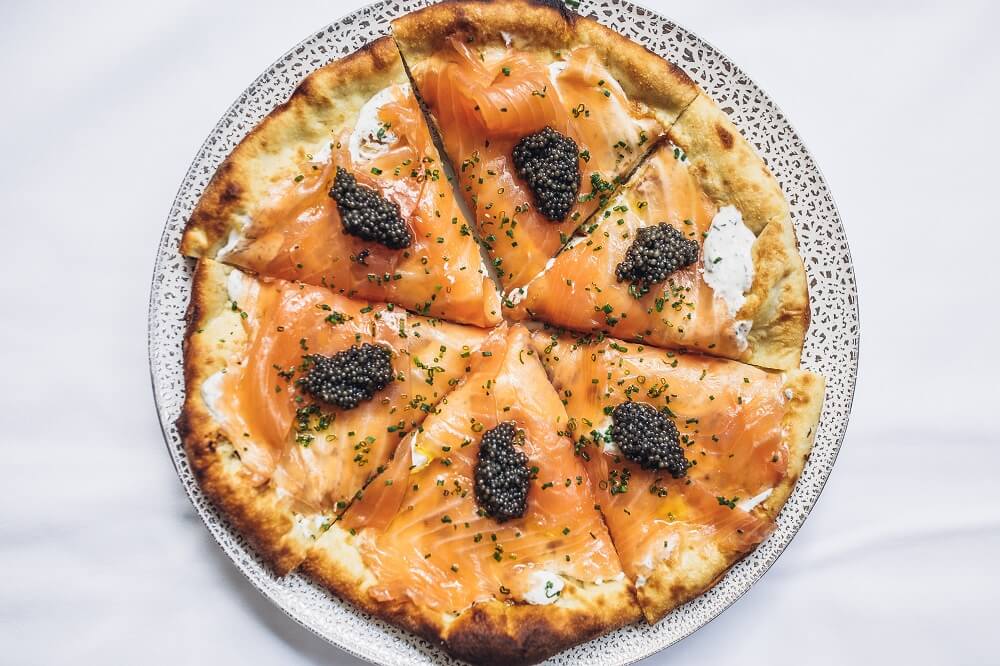
Smoked Salmon Pizza at Spago / Image: Wolfgang Puck Fine Dining Group
Puck joined us for an exclusive interview and revealed what makes America more attractive to restaurateurs, why chefs should stop spending all of their time in the kitchen, which of his restaurants is the only one allowed to be in the red, and much more.
So, Wolfgang, your 70-some businesses and 5,000-plus employees are mostly in the US. Is Europe really that unappealing to restaurateurs like you?
Wolfgang Puck: Put it this way, I think things are easier in America. Americans eat dinner relatively early, around six PM. As you know, in countries like Spain, Italian and France, it’s a different story. As a result, I can usually expect to fill each table twice every evening, which is obviously a big plus from a business perspective. Plus, some European restaurants still have 40 people on staff, with 30 of them working for free. You simply can’t do that in America. Besides that, I live in Los Angeles, which is far, far away from everything. If I were in New York, for example, Europe would only be a six-hour flight away. But that’s why I was sure from the beginning that I wanted to open the majority of my restaurants in America – this way, I’m not constantly traveling all over the world. It became unavoidable during the recession, though. At least five of our locations in L. A. and Vegas lost around a third of their customers. So I opened one Cut by Wolfgang Puck location in London and one in Singapore, because back then Europe and Asia were the only places we could expand into.
Which begs the question: As a restaurateur with so many locations, how important is it for you to make regular appearances at each?
Puck: I used to have a chef and a director who traveled around on my behalf and told everyone at all of my businesses what to do, how. And then, of course, they decided they needed more people if they were going to keep an eye on everything. At some point, I just said, “Surely not.” I completed a management program at Harvard University not all that long ago, and what I learned there is that not everything can be centralized. To me, that meant that every chef and every manager had to be in charge of his or her own location. Whether they were in Singapore or Istanbul, they had to run the place like it was theirs. The most important thing is that they get a share of the profits. I just set hard boundaries that they’re not allowed to cross. So if, say, a chef in London does the best guinea fowl and quail, then he should do them, even if I can’t micro-manage him on it from L. A. They’re perfectly capable of telling me what they want to do. Otherwise I would have to go around telling everyone in every country what to cook, and there’s no point. Take my head chef in Singapore, for example: he’s 42 years old, he’s been in the business for a long time, he doesn’t need a babysitter. And I have to say, new technologies are enormously helpful with that as well. I Skype regularly with the people at Cut in London,
for example. I can tell them exactly what I want them to do, but crucially, I trust them so much that I also say, “Don’t just do everything how I want – if your way is better, do that instead.” Ultimately, it all comes down to this: you have to hire good people and then pay them well. Basta.
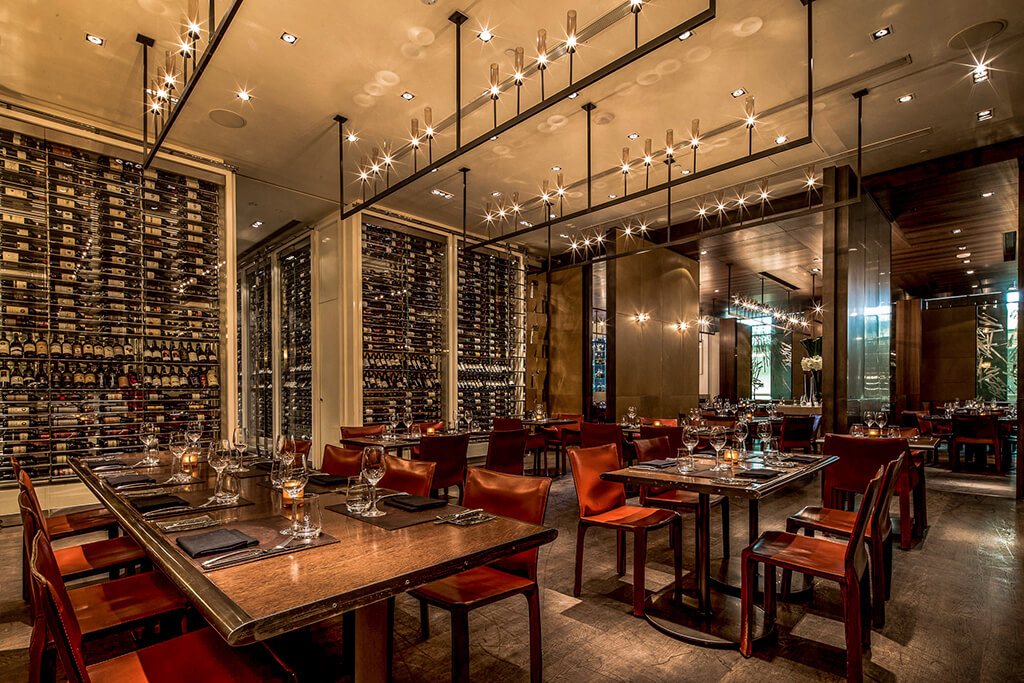
Cut Singapore / Image: Wolfgang Puck Fine Dining Group
Your businesses cover the entire gastronomic spectrum, from fast food to fine dining. What’s an empire of that size like in terms of economics? Do the profitable fast-food places support the fine-dining restaurants?
Puck: Not and all, for a very simple reason: each business has to be profitable on its own. Including my fine-dining places.
Are they, really?
Puck: Of course. Otherwise I’d have to close them. The Rogue is the sole exception. It’s a little place, it only seats ten. We lose money there, but it acts as a kind of test lab: the staff there are all chefs of mine at locations in London or Singapore or wherever, and they come in and cook there – they’re all experienced chefs. And then we have two young chefs, so it’s a total of four people, cooking for ten people. So always changing things up, but without using anything we already have in place at other locations – they have to keep creating new things. That kitchen always has the most state-of-the-art equipment, too – it really is a test lab, it’s where we try out everything that we want to do in the future. The Rogue is the only place that doesn’t make a profit, but every other location has to be financially viable.
Well, what does Wolfgang Puck do if a business isn’t profitable?
Puck: Simple. I close the place. In 1990, for example, I opened a brewery in California. I was thinking about how, back in Villach, they had the brewery and then the tavern beside it. And I thought to myself, “I’m going to do a modern version of that in America.” The tavern worked really well, I even had a butcher from Munich who made weisswurst and charcuterie. The problem with the brewery was that we were expecting to sell a million crates of beer in the first year – that was what our business plan was based on. We actually only sold around 30,000. I really wanted to create a brand around that beer, but it didn’t work. Part of the reason for that was probably that the brewmaster didn’t pasteurize the beer, so the bottles went bad. After two years, I decided I would throw him out, but he owned 50% of the business, same as me. He didn’t want to go. So I said, okay, then I’ll go – and close the place. That was that.
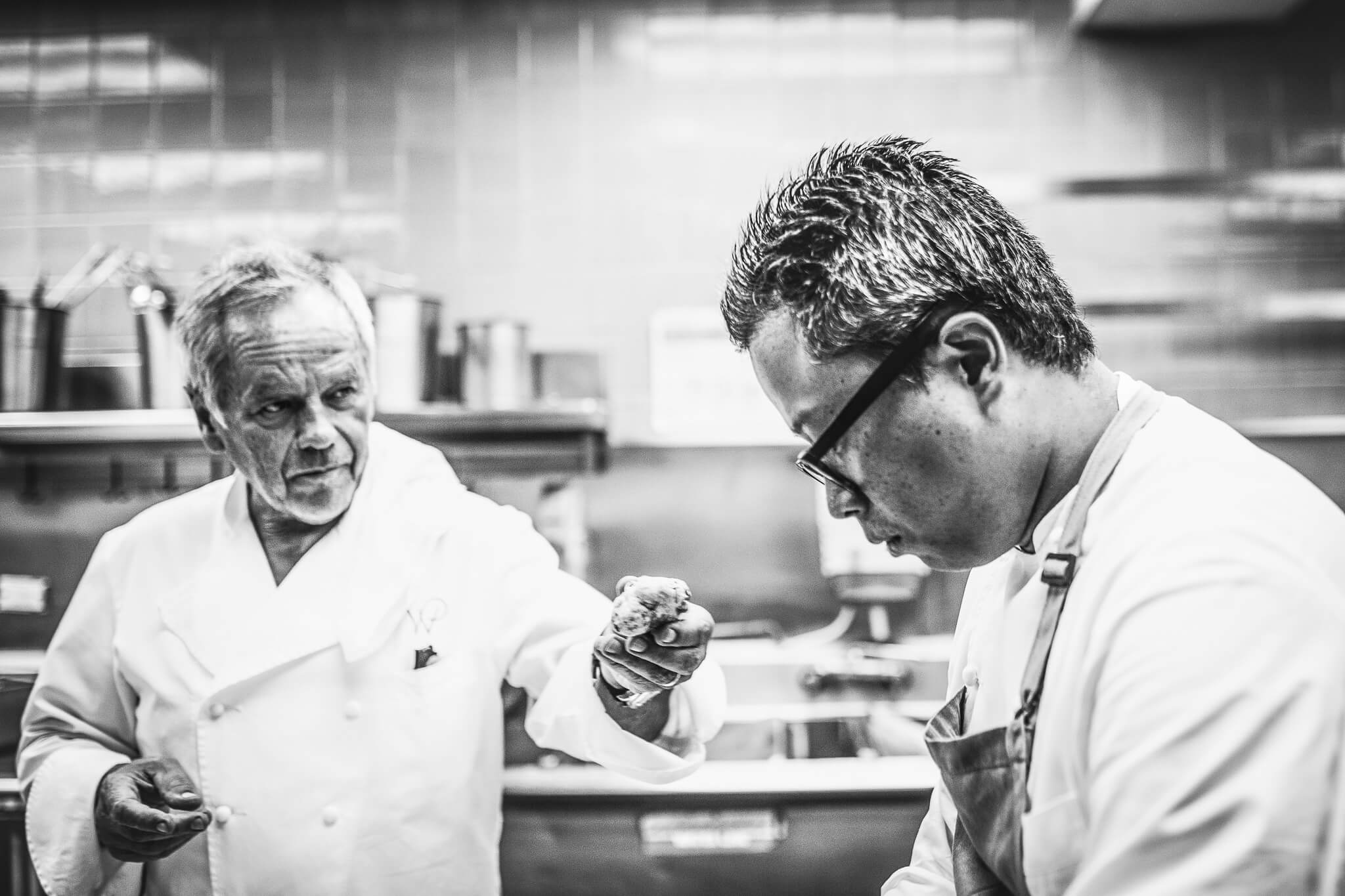
Image: Wolfgang Puck Fine Dining Group
The food service industry has comparatively high rates of bankruptcy. It’s a highly complex undertaking, and it’s more than a lot of people can handle. As a restaurateur, what did you do right – or to put it another way, what’s everyone else doing wrong?
Puck: For example, if your restaurant isn’t making any money, but you also have a TV show and you give cooking demonstrations or whatever, then that’s okay if your money comes from those and you walk away with a profit. As a restaurateur, and as an entrepreneur in general, you really always, always have to stay humble. You need to be able to realize your own mistakes, because you can learn a lot more from those than from success. Example: not long ago, I noticed that I still have things to learn, so I went to Harvard. I don’t use a computer; I wrote all of my papers out by hand. Everything is exponentially faster now than it was in the old days. Everyone always knows what’s going on all over the world. But running a business depends on many different factors, and not all of them are givens anymore. Your own personality is important, but so are the personalities of the people around you – and to me, dealing with them is a much bigger challenge than cooking is.
You started Spago in 1982. How much has the restaurant business changed since then?
Puck: When I came to America, cooking wasn’t a profession. If you told somebody you were a chef, they’d look at you like you were some sad sack who sold used cars. That’s changed, obviously. It can be a very well-respected profession now. Nowadays, I think you have to do more than just stand in the kitchen. You have to get into the business side of things. Another change is that now you can run more than one place. Back then, I’d think, “Well, if the Four Seasons has 60 hotels, why can’t we have 20 restaurants?” Restaurants are very complicated, of course – probably more complicated than hotels. But still, in the end, we’re only as good as our last meal. And I can make that last meal, or someone else can.
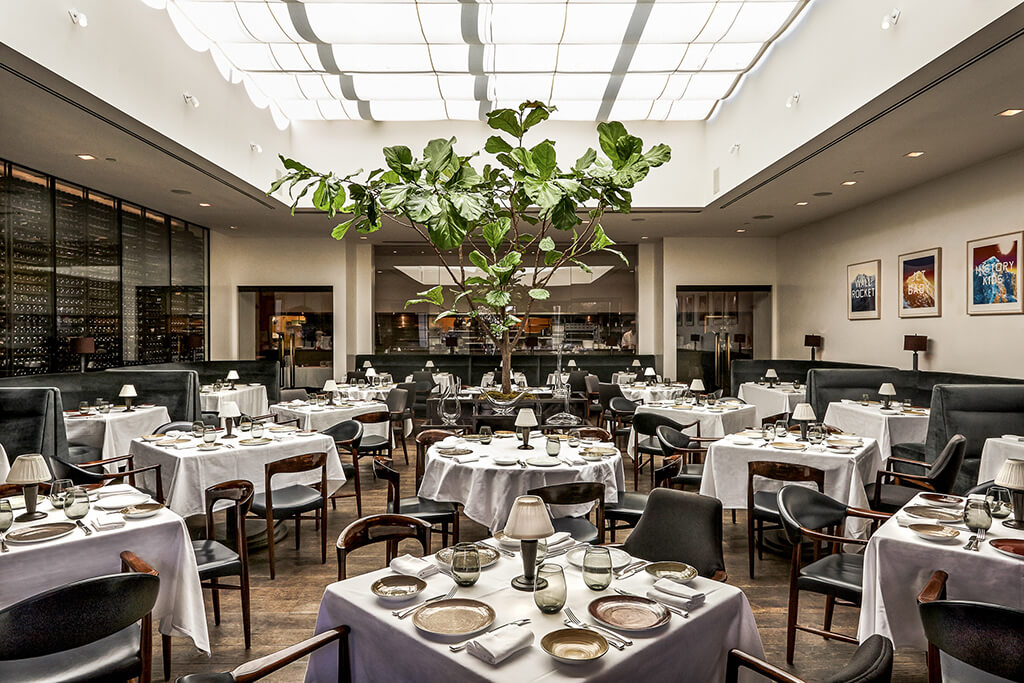
Spago / Image: Wolfgang Puck Fine Dining Group
Not long ago, you signed a 50-year contract for a new restaurant. Can you reveal anything about that to us?
Puck: That’s really a big story. My friend Frank Gehry, the most famous architect of our day, built the Guggenheim Museum in Bilbao and the Louis Vuitton Foundation in Paris, and he’s going to do our new restaurant as well. It’s going to be right by the ocean, in Malibu. It’ll be a new version of Spago. That’s all I can reveal for now. There’s a restaurant in the location at present, but it’s hideous, which is why I said, “Okay, let’s tear the whole thing down and build a really great beach house.” Frank’s already 90 years old, which is why I’m so confident that he’s not just going to throw any old thing together. Especially because, despite his age, Frank has more projects now than he did 30 years ago. He’s building everywhere from Seoul to Paris, all billion-dollar projects. He’s so passionate – when I’m with him, he shows me everything, and he has such love and passion for his profession, it’s unbelievable.
When will the restaurant be opening?
Puck: It’ll be awhile, because all the permits and building plans take an extremely long time with oceanside projects. We’re hoping to start construction at the beginning of next year.
What kind of investment costs are we talking for a project like that?
Puck: Right now, around $35 million. It’ll be worth it, though, at least for my children. Not only is it good for our brand, it’s good for us to keep doing new things, keep trying new ideas.










